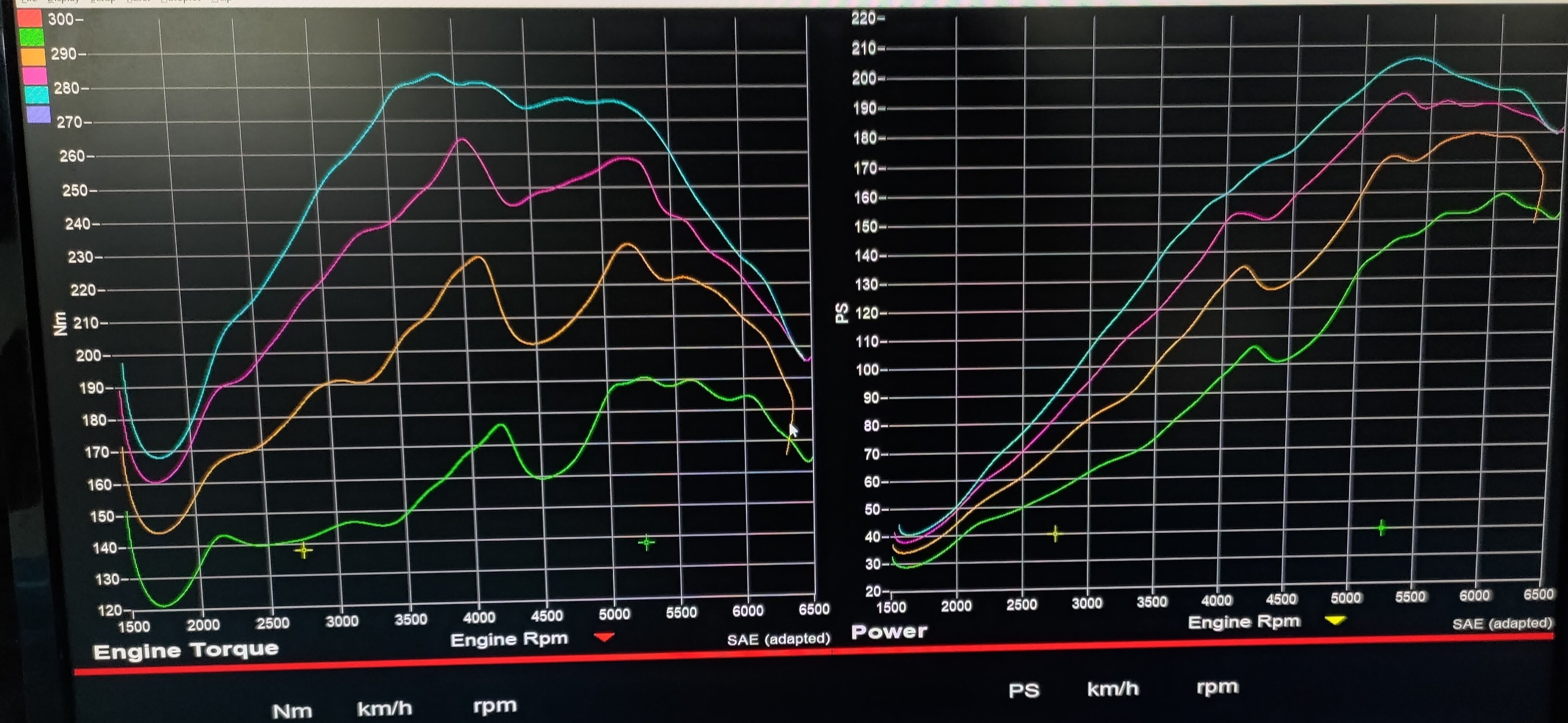Sale ends todayGet 30% off any course (excluding packages)
Ends in --- --- ---
Working on a RB26 GT-R R32 with HKS Vcam installed.
Did a couple pulls on the dyno testing the power output at different VVT intake angles. Results showed that I need 30 degrees (max advance possible on spec1 Vcam) advance throughout the entire RPM range without needing to dial back at the high RPM range and looks like there is still much to be gained at the lower RPMs if the camshaft could be advanced more.
My first though was, maybe the whole intake cam were misaligned by one teeth as seems like the whole intake cam/vvt assembly could use another 10 degrees of advance. But at the start of the tune, I had another shop to check the timing belt for proper alignment (as I discovered other issues with the engine which made me uncomfortable to start tuning until I have everything check out). They even replaced the timing belt at the end as the old one was somehow stretched where they found the timing marks slightly misaligned.
The owner also had exhaust cams installed but without it properly degreed. An adjustable camshaft wheel was installed but it was set on the zero mark. Would this also be the cause of the strange result?
Should I be playing around with the exhaust cam first (looks like I need to retard it) or should the whole intake cam/vvt be advanced by one teeth?
Attached are the dyno plots going from 0 -> 10 -> 20 -> 30 degrees and you can see the power output jumping up significantly from each advance.

Thank you!
Sounds like you have the tools and the right mindset to maximize the power output. It just takes time and effort. If you do advance the cam timing by one tooth, be sure to mechanically check that there is no interference between the valves and pistons at the maximum advanced position.
Yes thank you for the reminder on checking the valve clearance. I almost overlooked that and things would be catastrophic if they indeed touch! Doubt I would actually advance it though, car has been on the dyno for well over a week already. We simply don't have the time.
Anyway, I have tried retarding the exhaust cam by 5 and 10 degrees. Made barely any difference though. The reason I try retarding the exhaust cam is since the advancing the intake seem to be making much more power and advancing the intake also means increasing the overlap, I might as well try increasing the overlap by retarding the exhaust cam to see if it helps.
A "step 1" kit?
Valve clearances are a consideration, as the step 1 kit is designed for use on stock pistons, hence the 30 degrees of total range, vs the step 2 and step pro designed for relieved aftermarket pistons with 50 degrees of total range.
In experience, most low to moderate power combinations will respond to as much intake advance as available (often 20-26 crank degrees of advance with a variable cam gear) without any issue.
I wouldn't recommend jumping the cam a tooth advanced to be honest, as it will be quite extreme, with a strong chance of piston to valve contact (particularly if you are using that stock controller)
As those cam gears are subaru variable cam units for the vcam, the metal outer "gear" is bolted onto the alloy centre. you are better off modifying this for 5-10 degrees more advance (the holes in the outer ring are slotted for some adjustment anyway) rather than the extreme of jumping it a tooth. This does require the gear to be removed however.
Thank you Nathan, for the very useful detailed information on the V Cam system.
Yes, this is a step 1 kit. What I find strange is, for most of the VVT engine and the one other V Cam RB26 I have worked on, you will need to dial back the advance at the very high rpms by at least 20 degrees. But in this case here it seem to want the full 30 degrees of advance across the whole range.
You seem to very experience with the V Cam system. Do you know whether the base duty cycle should differ greatly between different engines? The previous V cam RB26 I worked on only required slightly over 40% duty cycle for the cams to start moving, this engine currently needs over 70%. The first engine had an uprated oil pump but would it cause such a huge difference? Anyway 70% on its own seem pretty high to me for any VVT systems.
Thank you!
